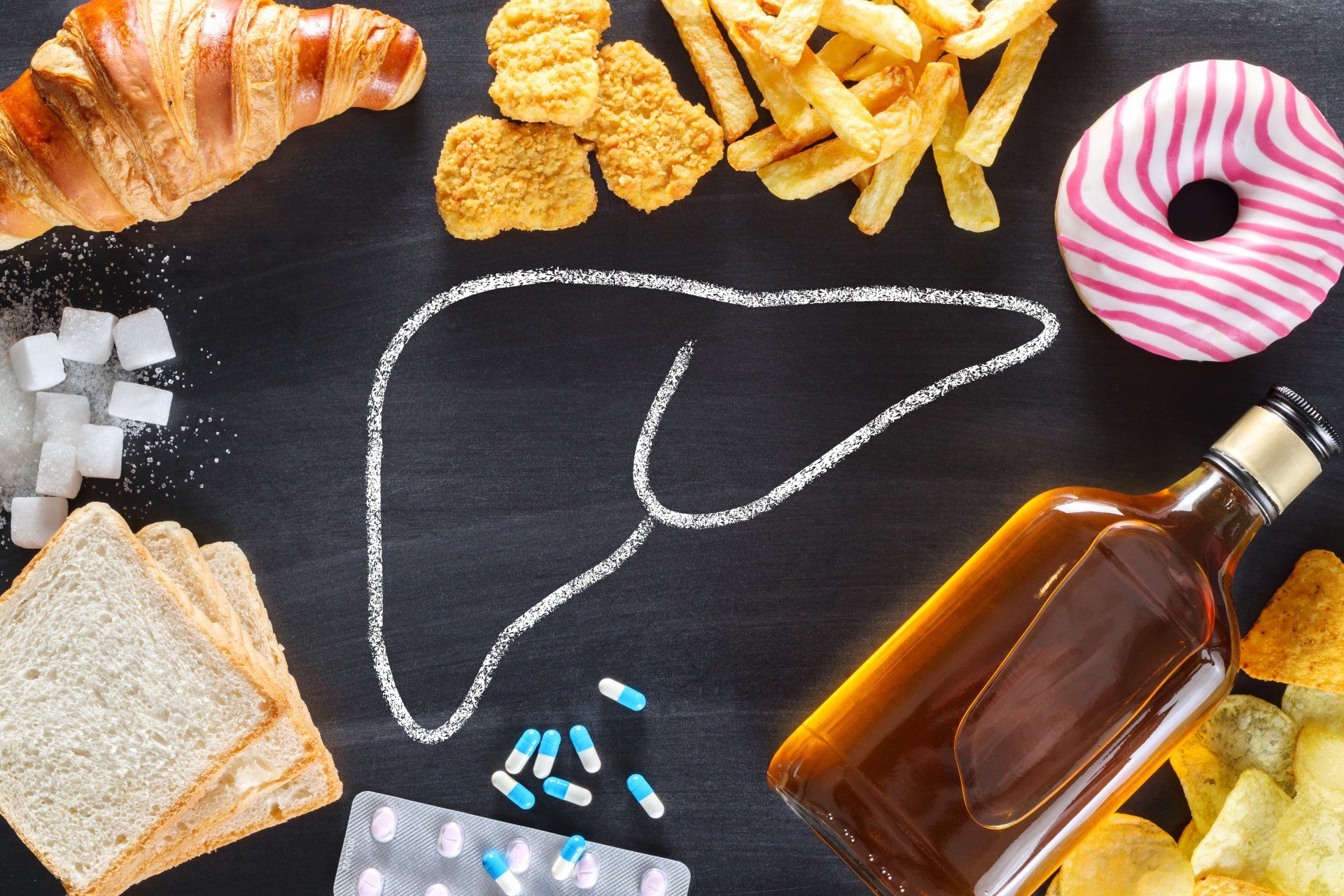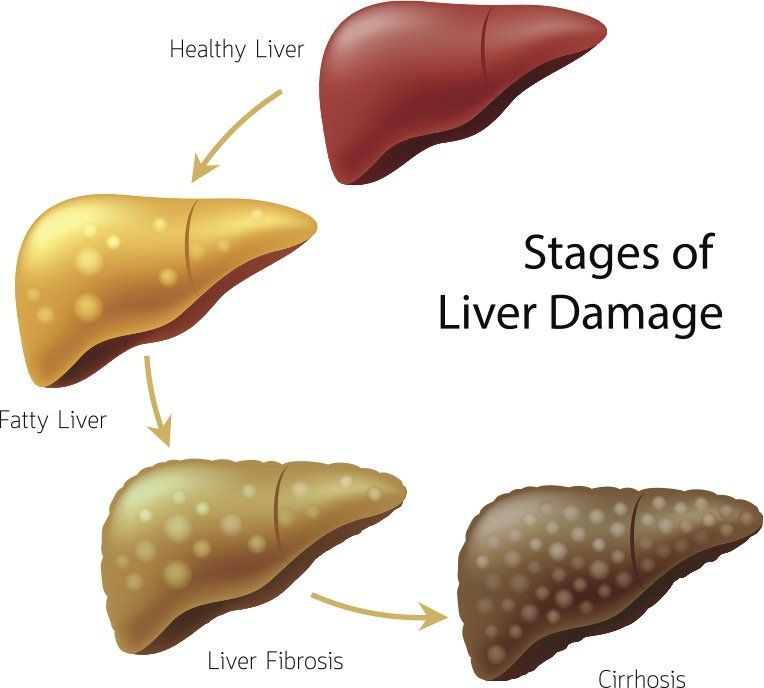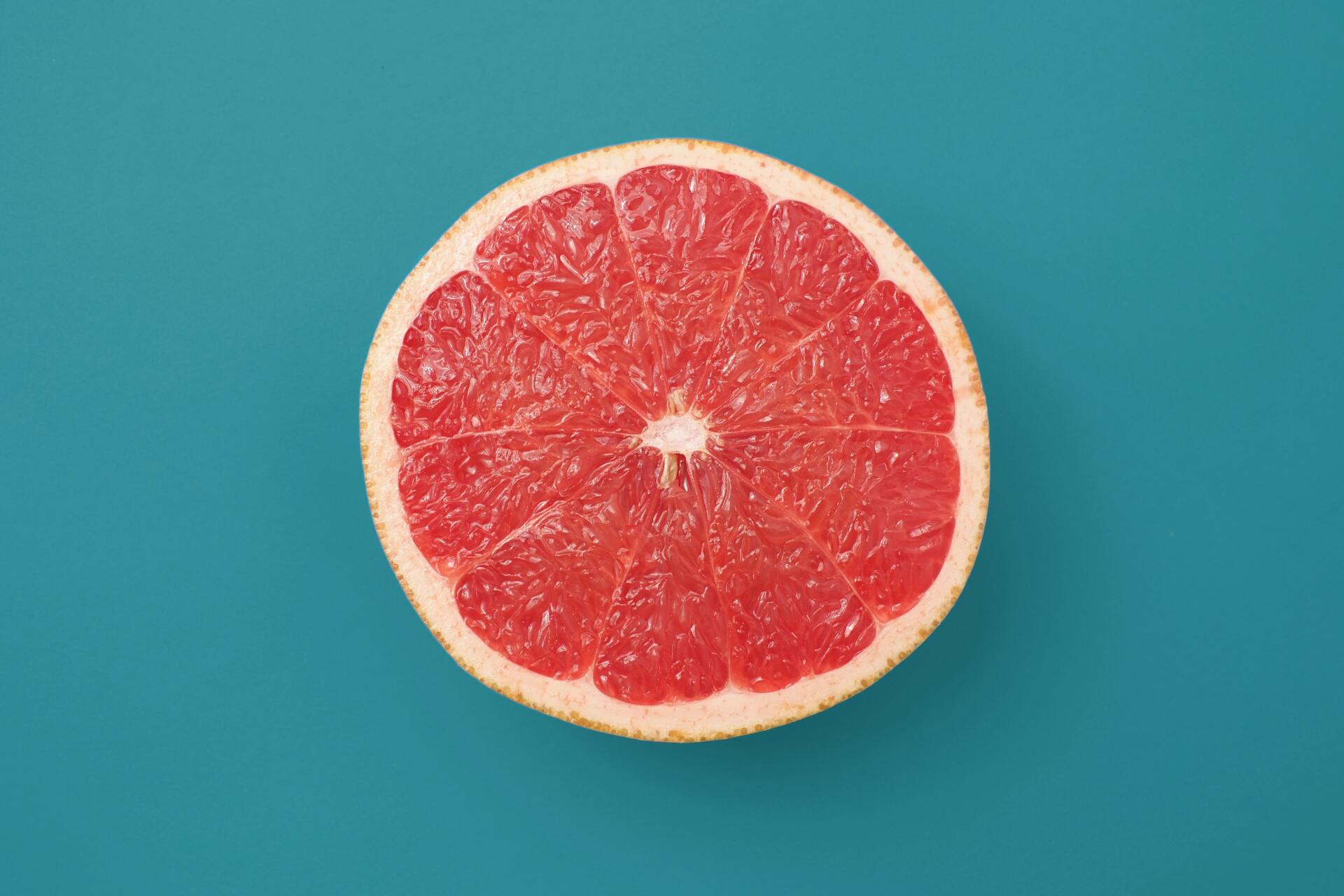Combating Non-Alcoholic Fatty Liver Disease (NAFLD)
Because of the definite links between diabetes and liver disease, it’s important that everyone, particularly those already diagnosed with type 2 diabetes, focus on liver health.
Concerned about your liver? Get In Touch
Contact Us
We will get back to you as soon as possible.
Please try again later.
What is Non-Alcoholic Fatty Liver Disease? (NAFLD)
There’s always some fat flowing in and out of the liver.
In fact, the liver makes fat, glucose, fructose, and other compounds, and packages fat for distribution throughout the body.
Sometimes, however, the liver can get over-run with fat.
This leads to inflammation, insulin resistance, damage to the liver cells, and can become NAFLD and lead to type 2 diabetes.
The build-up of fat in the liver is a form of “energy toxicity” and comes from obesity, over-consumption of fructose, over-eating, lack of physical activity, and high blood insulin levels.
Fatty liver can be detected through imaging and blood testing. Imaging includes MRI, Ultrasound, and CT scans, measuring the amount of fat in the liver. Blood testing includes what are often termed “liver enzymes”, such as alanine aminotransferase test (ALT), aspartate aminotransferase test (AST), and Gamma glutamyl transferase (GGT).
Fatty Liver Disease Progresses Through 4 Stages:
Fat Build Up
Inflammation
Scarring
Permanent Damage
What Causes Non-Alcoholic Fatty Liver Disease? (NAFLD)
Processed Foods
A diet rich in processed and refined carbohydrates, which typically includes a
high amount of fructose, leads to increased fat production and storage in the
liver.
Overeating
When you consume more energy, in the form of fat and carbohydrates, than
you burn, the excess energy can get trapped in the liver, leading to a build-up of fat.
InsulinResistance to the hormone insulin leads to elevated blood levels of insulin.
Since insulin encourages fat storage and suppresses the breakdown of fat,
this can lead to an accumulation of fat in the liver.
Visceral Fat
Some people tend to store more fat around the midsection than others.
Having an “apple shape”, or central adiposity with an elevated waist-to-height
ratio, increases the risk for NAFLD.
Chronic Inflammation
While some inflammation is normal, chronic systemic inflammation from
toxins, gut dysbiosis, poor diet, or infections leads to insulin resistance and
may contribute to NAFLD.
Lack of Physical Activity
Exercise is a great way to burn extra energy, including fat from the body.
Sedentary lifestyles lead to more energy toxicity and a greater risk of fatty
liver.
The Connection between NAFLD and Diabetes
Most people understand the association between consuming large amounts of refined sugar and carbohydrates (as well as processed foods and fake fats), and the development of type 2 diabetes.
Too much sugar causes blood glucose levels to skyrocket, which causes the pancreas to have to pump out high levels of insulin to process that glucose. Over time, our pancreas gets beat up, and our cells become resistant to insulin, and we must support this natural metabolic process through artificial means, like medications and injected insulin. There is evidence showing the development of type 2diabetes may also stem from certain types of sugar’s effect on the liver.


Fructose - Your Livers Enemy
When we talk about sugar, we’re talking about several different molecules:
- Glucose
- Galactose
- Fructose.
Glucose can be metabolized by every cell in the body and, if we don’t get it from our diet, our bodies make it.
Fructose, however, can only be metabolized by the liver, because only the liver has a transporter for it.
Athletes can generally eat quite a bit of fructose without having any health issues because their livers turn the fructose into glycogen, a storage form of glucose in the liver.
Being very active, athletes would burn through the glycogen making room for more. But those people who aren’t as active… their livers are constantly full of glycogen.
So, what happens when they consume more fructose (easily found in most processed foods)?
The fructose will be turned into fat. Some of the fat is released from the liver and accounts for blood triglycerides, while much of the fat remains in the liver, causing NAFLD.
At the exact same time as your liver is getting fat, it is also becoming insulin resistant. This combination causes elevated insulin throughout your body, leading to obesity, metabolic syndrome, and other diseases.
After some time, the pancreas becomes unable to secrete sufficient insulin to get all that glucose into your cells, and eventually, you are diagnosed with type 2 diabetes.


Symptoms of Non-Alcoholic Fatty Liver Disease (NAFLD)
- Fatigue
- Hormone imbalance
- PMS
- Loss of appetite
- Jaundice
- Allergies
- Bloating and gas
- Heartburn
- Allergies
- Poor sleep quality
- Gallstones or gallbladder problems
- High blood pressure
- Sugar cravings
- Frequent headaches
- Acne or oily skin
- Poor concentration
- Inability to lose weight
- Mood swings
- Bad breath
- Coated tongue
Foods To Help Reverse Non-Alcoholic Fatty Liver Disease (NAFLD).
Grapefruit
Grapefruit is high in vitamin C and other powerful antioxidants and increases the cleansing processes of the liver. Consider incorporating a squeeze of grapefruit or a few drops of grapefruit essential oil in your water first thing in the morning.
Green Tea
Green tea is full of plant antioxidants known as catechins; compounds known to assist liver function. While the actual tea offers many health benefits, the green tea extract is much higher in the helpful catechins.
Leafy Green Vegetables
Leafy greens such as spinach and kale are powerful allies in cleansing the liver. Plus, they’re delicious and versatile because they can be eaten raw, cooked, or juices. Leafy greens can neutralize heavy metals, chemicals and pesticides, allowing your liver to heal and function properly.
Fibre
Increasing fibre can help bind extra fat in the gut, reducing circulating levels of triglyceride and cholesterol. Additionally, 10-20 grams of soluble fibre per day has been shown to improve insulin sensitivity and reduce liver fat.
Olive Oil
The main fat in olive oil in oleic acid, a monounsaturated fat. This type of fat, associated with the Mediterranean diet, has been shown to reduce liver fat and reverse NAFLD. One study published in Diabetes Care found that a diet enriched with monounsaturated fats was associated with a “clinically relevant reduction of hepatic fat content in type 2 diabetic patients independent of an aerobic training program”.
These fats can also be found in avocado, meats, and nuts and seeds.
Coffee
Coffee beans are a good source of caffeic acid, which has been shown to improve fatty liver disease by reducing inflammation and oxidative stress. In fact, studies show that people who drink two or more cups of coffee per day have less risk for NAFLD than those who do not consume caffeine.
Making a change to combat Non-Alcoholic Fatty Liver Disease (NAFLD).
If you’ve been diagnosed with diabetes or are overweight, it’s important to understand the connection between your overall health and the health of your liver. If you want to start really loving your liver, the best things you can do are to clean up your diet (cut out excessive sugars and processed foods), incorporate the foods listed above, and get plenty of exercise.
FAQ
-
1. What are the costs of seeing a Naturopath?
Free Clarity Call ( Telehealth) 15 minute
Naturopathy Initial Consultation $180 duration 60 minutes
Naturopathy Return Consultation $90 duration 30 min
Naturopathy Acute Consultation $50 duration 20 minutes
-
2. Do you take both male and female clients?
Yes, Everyone is welcome.
-
3. How long will my treatment take?
Treatments vary case by case. There's no cookie cutter approach here. It really depends on your ailment and what I am treating you for. Could be as little as a week - some treatments are ongoing. Best to message me directly and have a chat.
-
4. Do I have to test before I get a treatment?
Again this varies case by case.
For severe cases and stomach issues I always recommend testing so that the results give us a clear outline of what the root issue is and roughly how long it will take to fix.
When we don't run appropriate tests we are just throwing things at the wall and hoping that they stick - Knowledge = Results.
-
5. Can you treat SIBO?
Yes SIBO (Small Intestinal Bacterial Overgowth) is very treatable.
More and more cases of SIBO are becoming common because of the procsessed foods we ingest and the rapid intake of antibiotics. Furthermore, the stress of day to day life loaded with the stress of technology and social media may result in some kind of imbalance in your stomach flora.
-
6. What's involved in my initial consultation?
In your initial consultaiton we go over your lifestyle, dietary habits, sleep - basically break down your day lifestyle factors and nutritional intake.
We speak about your symptoms and outline your health goals.
The first consultaiton usually lasts for roughly around 60 minutes to go through everything.
After the first consult you will know whether we need to do further testing to make a diagnoses.
-
7. What kind of tests do you do?
GI Map Testing
This test is conducted to diagnose problems with the gut.
The test is designed to assesses your microbiome, as well as immune and digestive markers, from a single stool sample.
This test identifies pathogenic and beneficial
(commensal) bacteria, along with opportunistic pathogens, parasites, fungi, and viruses, using new
technology mainly multiplex, automated, DNA analysis.
Hair Tissue Mineral Analysis
Other lab tests can provide very valuable information such as what foods we are allergic to, the stateof our gut, if we have infections, or if our hormone levels are up to par.
With HTMA, we have something extremely powerful.
From one strang of hair, the test will tell us whether youy're pre-diabetic, depressed, immuno comprimised or if you have too much aluminion that is impacting brain health and cognitive function.
HTMA uses a small hair sample to get up to 3 months of information on the status of your mineral ratios and heavy metal toxicity which gives us insight into what is throwing the body off-balance.
The hair is the ideal testing mechanism because it shows a cumulative pattern of health information
that is safe and non-invasive in nature.
It reveals health data far more accurate than urine or blood sample.
-
8. What methods will you use to treat me?
Varies greatly depending on your ailments and lifestyle factors.
The first step is to establish diagnosis.
Once we do that I use a combination of lifestyle factors (Nutrition / Sleep / Exercise) and Herbal Supplements.
Let's Talk
Simple changes get results. You don't have to live your life always reacting to foods with no energy and low libido.
Subscribe to my mail list to get the latest news on herbs, supplements & health tips. No Spam, I promise.
Contact Us
We will get back to you as soon as possible.
Please try again later.




